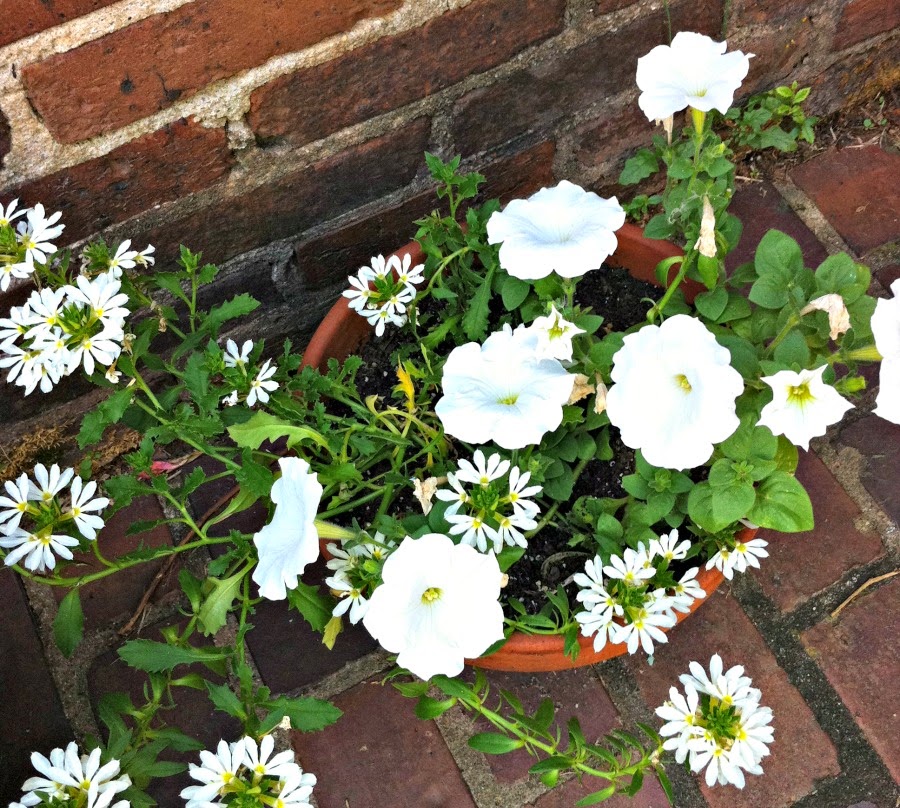When you have a nice Saturday afternoon, you may, like me, have the itch to get out and plant flowers, vegetables, and more. Unfortunately, it's still too early to plant tomatoes, petunias, and those other heat-loving plants we all love, but it's the perfect time to get out and prune.
There is a right way and a wrong way to prune. I see so many beautiful trees and shrubs ruined by bad pruning--even pruning done by well-meaning "landscape" companies! Good pruning makes your trees and shrubs both more beautiful and more healthy in the long term. It may take a little longer, but it doesn't have to be complicated. The reward is worth it. I'll show you how!
First: The Tools
I have three tools I use for all my pruning. I could probably use a couple more, but these three serve me just fine 95% of the time.
 |
My favorite pruning tools, from left to right: bypass hand
pruners, loppers, and folding saw |
Most of the time, I use hand pruners (
Felco 2, to be exact) to cut small branches. For larger branches, or branches slightly out of reach, I use loppers. Because I have some older trees and shrubs in my yard, I use my folding saw from time to time to cut large limbs (and small trunks) that are dead or diseased.
Now I admit, I don't really like the formal look in my garden. If that's what you want, your main tool will be hedge shears.
Whatever you're using, you'll want to make sure they're sharp and in good condition. Not only do dull tools make your job more difficult, but good, clean cuts are important for the health of your plant. When you get tears or ragged cuts, those invite disease and infection to your plant. Clean cuts will heal faster and keep disease out.
Here's a handy video about sharpening your pruners if they've gotten dull.
Where to Cut
If you like the formal look, it's fairly simple: shear your shrub to the shape you want. You just want to make sure the final shape is slightly wider at the bottom. If it's not, the lower branches can get shaded out by the upper branches and die off. If your shrub does get a dead branch, you'll use hand pruners or loppers to remove it.
If you want the more natural look, you'll use a combination of "thinning" cuts and "heading" cuts.
Thinning cuts involve removing a whole branch back to its origin. Thinning cuts are good for the health of your shrub because they let more light into the canopy. Thinning cuts are especially good for removing crossing branches. Not only are crossing branches less aesthetically pleasing, but they can rub against each other and cause wounds which make way for disease.
 |
| A thinning cut: removing a whole branch |
Heading cuts have two purposes: 1) they make branches shorter and 2) they make plants branch out more and become bushier (get it? "
bushier?"). To make a heading cut, you cut the tip of a branch back to right above a node. A "node" is where a leaf grows out of a branch. When you cut the branch back, it's also where a new branch will grow out. Most of the time, a new branch will grow in whichever direction that node/leaf is facing. If possible, you'll want to cut back to a node that is facing outward, not inward, for a healthier, more attractive plant.
The best branches to make heading cuts on are branches that are too long (sticking out) or where there's a hole in your shrub. A heading cut will cause a plant to branch out, filling in the hole in the overall shape. Of course, if your plant already has a mostly even shape, you can still use heading cuts evenly spaced around the shrub to get a denser look (or, for flowering shrubs, to get more flowers).
 |
| A heading cut: making a branch shorter |
When to Prune
As I mentioned, March is a great time to prune, but it's not the only time you can prune. For your regular, green, non-flowering trees and shrubs, you can pretty much prune from January through August. Fall is a bad time for pruning because pruning can cause a sudden flush of new growth, which is easily damaged by an early frost.
For your spring-flowering trees and shrubs, such as azaleas, camellias, dogwood, forsythia, and cherry trees, now is actually a terrible time to prune. You should wait until May or June (after they flower) to do any significant pruning. If not, you'll be pruning off the flower buds, and it will take them another year to grow more buds.
For your summer-flowering trees and shrubs, such as hydrangeas, gardenias, crape myrtles, and magnolias, it's fine to prune in the springtime.
As for roses...whole books could be written on the subject of pruning roses. (Someone actually wrote
one, as a matter of fact.) Typically roses are given a good hard pruning in February, leaving 3 to 5 main canes (branches) that are cut back to 2 feet tall. All the smaller branches are removed. Then, as roses bloom, the dead blooms are cut off to encourage the plant to keep blooming. For the ubiquitous 'Knockout' roses, this isn't really necessary--they'll keep blooming anyway--but I think they look nicer if you remove all the old dead flower parts from time to time.
Have fun pruning, and feel free to leave a comment below if you have any questions about pruning your shrub.




















































